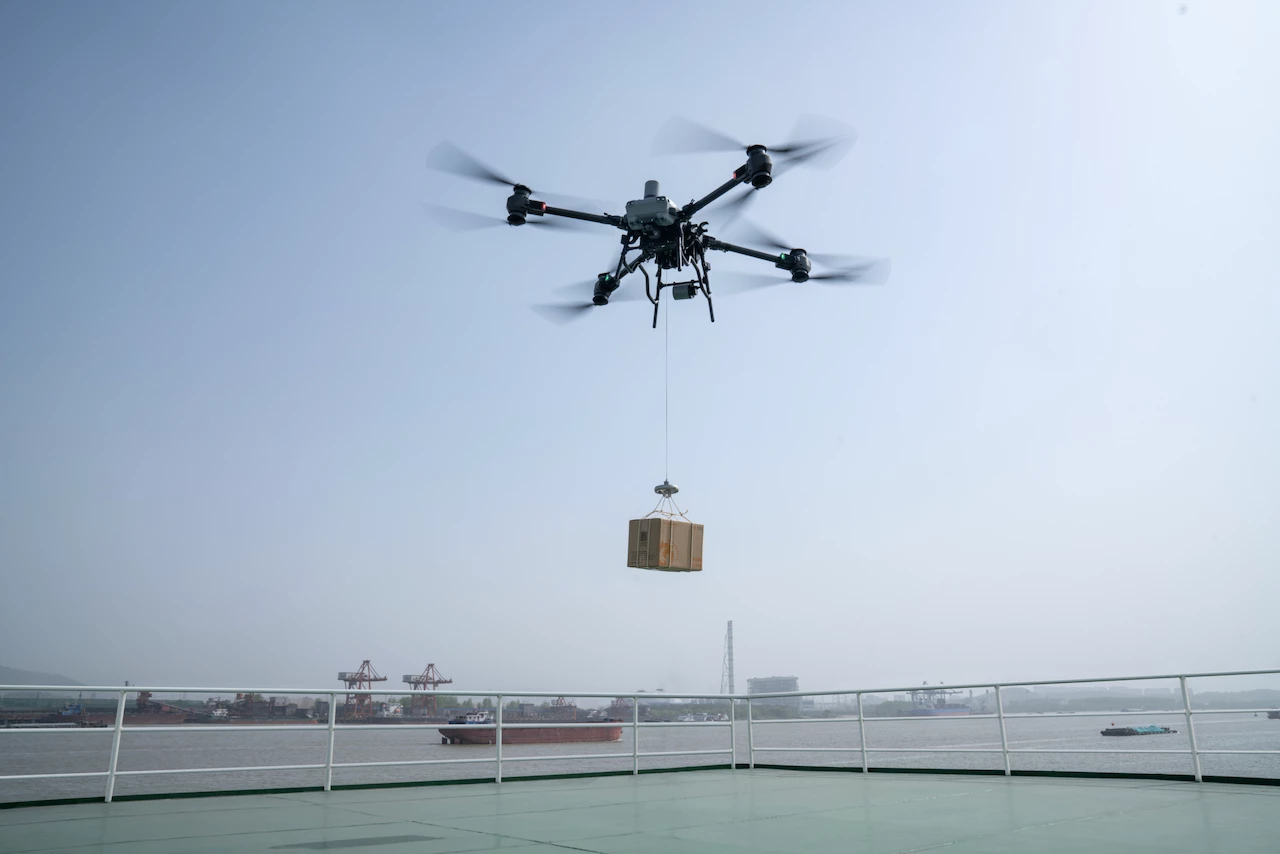Although DJI is probably the best-known manufacturer of consumer and cinematography drones, it hasn't ventured into the world of delivery drones … until last week, that is. The company's recently unveiled FlyCart 30 (FC30) is now set to join the growing ranks of package-toting multicopters.
Announced on Jan. 10th, the FC30 features eight motor/propeller units distributed between four arms – two units per arm. In its standard dual-battery configuration, the drone is reportedly capable of carrying a 30-kg (66-lb) payload up to a distance of 16 km (10 miles) at a speed of 72 km/h (45 mph). If one of those batteries is removed, it can carry 40 kg (88 lb) up to 8 km (5 miles).
The cargo can be loaded in either of two ways.
If there's a good landing spot at the destination, goods can simply be placed in the drone's onboard 70-liter (18.5-gal) cargo case – both weight and center-of-balance sensors ensure it's positioned properly. If there's nowhere to land at the destination, the payload can be hung on a tether connected to a motorized winch on the belly of the FC30. The drone can then hover in place as the remotely located pilot lowers the cargo down.

Speaking of pilots, the copter is capable of maintaining a stable connection with its operator up to a distance of 20 km (12 miles). That person is guided by GPS and a real-time feed from the drone's HD gimbal-stabilized camera, although the aircraft can autonomously avoid obstacles via its phased array radar and binocular vision systems. If it still ends up falling from the sky for some reason, it will deploy an emergency parachute.
As an added bonus, using the DJI Pilot 2 remote control unit – one at either end of the journey – it's possible for the pilot at the point of origin to switch control over to a pilot at the destination.

All of the electronics are IP55 water-resistant, meaning they can withstand low-pressure jets of water from any direction. And thanks to its self-heating batteries, the FC30 can fly in temperatures as low as -20 ºC ranging up to a toasty 45 ºC (-4 ºF to 122 ºF).
DJI tells us that the FlyCart 30 will be priced at about US$42,000, for a package including the drone, winch, charger, six batteries and an extra remote. It should be globally available by the end of the first quarter of this year.
More of its features are outlined in the following video.
Source: DJI





